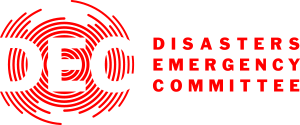
ResourceSpace has changed the way the DEC uses content, making it much easier for us to quickly make assets available both internally and externally during our emergency appeals.
Blog
9th February 2021
_(1).jpg)
With cloud technology leading the way in digital transformation, it's not surprising that more and more Digital Asset Management (DAM) software is entering the market. But how can you tell which one is right for your museum? In this article, we address the key functions that are necessary for your sector and provide some questions to guide your selection processes.
There are many reasons that museums choose to roll-out DAM software to manage their media files. Most do so for ease of use; at the click of a button, important videos and photographs can be uploaded, catalogued and stored in a location that is easy for others to locate. This makes sharing and using digital assets much quicker.
Other popular reasons that museums invest in DAM software include:
The most important thing for any museum considering digital migration to bear in mind is that they need to find the right DAM software for their needs, in order to maximise their return on investment.
If you already have a catalogue of existing digital assets, they'll need to be uploaded into your new system, too. To accommodate this, your Museum Asset Management software needs the ability to efficiently move this data across and offer a scalable solution. This process will also reveal whether the archival workflows suit your methods and requirements.
READ MORE: The Guide to Digitising Physical Artefacts
The public sector, in particular, is often reliant on charitable and government funding. When selecting a DAM provider, you have to consider whether you will have access to ongoing resources. If you're using a subscription-based product, this will be a rolling cost that you must be able to commit to, along with any implementation or maintenance charges.
Do you have a technical team within your organisation or will you require a third party to run through the installation, integration, onboarding and maintenance? Many DAM providers will offer some form of initial support, but when it comes to integrations and tasks that involve decisions around your existing hardware, you may need a specialist.
Museums have best practice standards when it comes to interacting with other institutions and the general public. Information needs to be shared and presented in a way that can be easily interpreted, categorised, and archived. Be sure to check whether the software you're considering will support your best practice initiatives and make sharing between institutions and users easy and simple.
READ MORE: Is your DAM Vendor ISO 27001 Compliant?
Is the software for internal purposes, or will others need an interface with varying degrees of access to your data? ResourceSpace allows you to have full version control over your assets, allowing you to undo any amendments made to resource metadata if administrators don't approve. Archivists, technical staff, administrators and researchers need an intuitive interface that supports collaboration, so be sure to give everyone on your team a test run of the software before you commit.
If you make use of other software and technology, it's important to check whether the collection management system (CMS) you're considering will integrate easily. Look for a product with an open API to ensure hassle-free integrations.
A telltale sign that you've invested in a scalable and reliable piece of software is development activity. If your DAM's creators are frequently upgrading the software and improving the features, you have the reassurance of a company that is devoted to delivering a high quality of service now, and in the future. You can check out previous versions of the software to get an indication of how frequently and to what extent it is being enhanced.
For public sector institutions like museums and libraries, catalogue growth can happen rapidly. Your DAM software needs to scale to accommodate your increasing asset load and any additional team members or users you onboard.
DAMs that have limited abilities to scale can impact your progress significantly, making it difficult to train people or access the metadata you need. The addition of new users - internal and external, is likely to be a frequent requirement. Make sure that this isn't an expensive or complicated process that you have to undergo each time.
READ MORE: ResourceSpace and The Ashmolean Museum - Case Study
Look for open-source software if customisation is a priority. The ability to customise your DAM in this way makes integrations with other applications and platforms possible. ResourceSpace is open-source software that's written in PHP, the prefered language of most developers. We enable you to brand your logo, colours, fonts and dashboard so that users always feel connected to your messaging and that there is consistency throughout your institution.
By asking all of these questions, your team can determine whether the functionality of the software will accommodate your museum's objectives. The goal of upgrading or bringing a DAM into your museum is to optimise your archival workflows and make your institution productive, engaging, and accessible to its users and patrons. The best way to shortlist the most suitable Digital Asset Management for museums is to test the software first hand. ResourceSpace invites you to a free trial of our Museum Asset Management software and our team is always happy to offer assistance and guidance as you test out the features. Click here to get started.
#MuseumTech
#CloudTechnology
#DataManagement
#PublicSector
#ITSupport
#BestPractice
#SoftwareIntegration
#Archiving
#Collaboration
#CMS